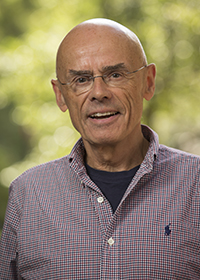Since the 1950's a number of experiments have been performed which show that the proton and neutron have a complicated internal structure. The same experimental efforts have led to the discovery of a multitude of similar strongly interacting particles collectively called hadrons. The subsequent experiments in the 1970's proved that three smaller particles called quarks could combine to make neutrons, protons and other hadrons. A lot of detailed theoretical effort has resulted in the development of a candidate for a theory to explain the strong forces between quarks. This theory is known technically as Quantum Chromodynamics, QCD for short. A number of approximations to the full QCD treatment of proton structure have been developed. Chief among these is the so-called Quark Model. Within this framework we are extending the use of the light-cone quantization method, due to Dirac, to formulate and analyze the bound state problem in QCD. It leads in a natural way to extensive studies of quantities, measured in experiments involving rapidly moving leptons and hadrons such as form factors, structure functions, distribution amplitudes, etc. Another topic investigated is the use of hyperspherical harmonics as a tool for solving the bound state problem in the quark model.

